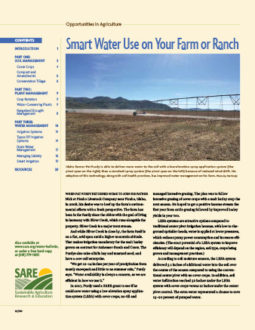Crop rotation is one of the most effective ways to manage water resources nationwide. Since farmers began growing grain, particularly in the Great Plains, they’ve used long periods of fallow to conserve water for wheat and other cash crops. The fallow system leaves the land bare over a year or more and allows water to accumulate in the soil.
More recently, farmers and researchers turned to crop rotation as an alternative. They find that rotations improve soil health, conserve water and achieve better profits.
Crop rotation using cover crops is one way to enhance soil health and subsequent crops while also helping to maintain cleaner surface and groundwater. Cover crops prevent erosion, improve soil physical and biological properties, and supply nutrients to the next crop. They also suppress weeds, improve soil water availability and break pest cycles. Individual benefits will vary by species, crop productivity and how long a cover crop grows before soil is prepped for the next crop.
Learn more about selecting and managing cover crops in Managing Cover Crops Profitably.
